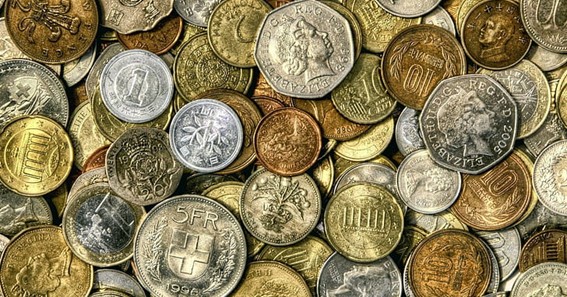Are you curious to know what is metallic money? You have come to the right place as I am going to tell you everything about metallic money in a very simple explanation. Without further discussion let’s begin to know what is metallic money?
Throughout history, various forms of money have been used to facilitate trade and economic transactions. One of the earliest and most enduring forms of currency is metallic money, which refers to coins made from precious metals such as gold, silver, and bronze. In this blog post, we will delve into the concept of metallic money, its historical significance, and its enduring legacy in the realm of currency.
What Is Metallic Money?
The use of metallic money dates back thousands of years to ancient civilizations. The practice of using metals as a medium of exchange emerged due to their scarcity, durability, and intrinsic value. Early societies recognized the rarity and desirability of precious metals, which made them an ideal form of currency.
Significance Of Precious Metals In Currency:
-
Intrinsic Value:
One of the key attributes of metallic money is its intrinsic value. Precious metals have inherent worth due to their scarcity and unique properties. Gold and silver, in particular, have been highly valued throughout history for their beauty, malleability, and resistance to corrosion. This intrinsic value provides a stable foundation for the currency and instills confidence in its worth.
-
Store of Value:
Metallic money, especially gold and silver, serves as a reliable store of value over time. Unlike paper currencies, which can be subject to inflation and fluctuations in economic conditions, precious metals have retained their worth throughout centuries. They have been used as a means of preserving wealth and protecting against economic uncertainties.
-
Standardized Exchange:
The use of metallic money enables standardized exchange and facilitates trade. Precious metal coins have a defined weight, purity, and denomination, making them easily recognizable and accepted by merchants and individuals. This standardization fosters trust and simplifies transactions, allowing for efficient commerce.
-
Cross-Cultural Acceptance:
Metallic money, particularly gold and silver coins, has been recognized and accepted across different cultures and civilizations. This acceptance has transcended geographical boundaries and facilitated international trade. The universal recognition and desirability of precious metals have contributed to their enduring role in currency systems.
-
Evolution of Metallic Money:
Over time, the use of metallic money has evolved alongside advancements in technology and financial systems. While coins made of precious metals were once the primary form of currency, they have been supplemented or replaced by paper money, electronic transactions, and digital currencies. However, the historical legacy of metallic money continues to influence modern monetary systems.
Conclusion:
Metallic money, represented by coins made from precious metals, has played a significant role in the evolution of currency and economic systems. Its intrinsic value, durability, and standardized exchange have made it a trusted medium of exchange throughout history. While modern financial systems have introduced alternative forms of money, the enduring legacy of metallic money serves as a reminder of the fundamental attributes and significance of precious metals in facilitating trade and preserving wealth.
FAQ
What Do You Mean By Metallic Money?
Metallic money is that money whose value of money (face-value) is greater than the commodity value (intrinsic value) of money.In other words, metallic money is made of metals which has less value then its face value. For example: metallic coin includes 1 rupee coin, 5 rupees coin etc.
What Is The Metallic Money Of India?
The rupee is named after rupiya, the silver coin that was first issued by Sultan Sher Shah Suri in the 16th century and continued by the Mughal Empire. One Rupee consists of 100 paise.
What Is Metallic Money And Bank Money?
Metallic money
Paper money is the money that consists of currency notes issued by the government or the central bank of that country. Precious metals or any other metal having high intrinsic value used as money are called metallic money. It was developed as a substitute of metallic currency.
What Are The Two Types Of Metallic Money?
- a) Representative Money: Representative money is that money which is fully backed by equal metallic reserve. The holder of a bank note can easily get it converted into metallic (gold & silver) form on demand. b) Convertible Money: It is the form of money which can be converted into gold, silver i.e. metallic reserves.
I Have Covered All The Following Queries And Topics In The Above Article
What Is Metallic Money In Economics
What Is Meant By Metallic Money
Metallic Money Example
Disadvantages Of Metallic Money
Metallic Money Information
Advantages And Disadvantages Of Metallic Money
Paper Money
Standard Metallic Money
Metallic Money In India
What Is Metallic Money
What is an example of a metallic money
What is metallic money?






